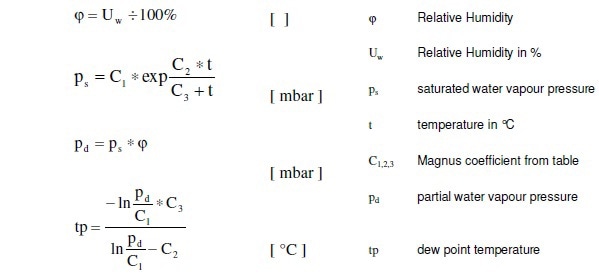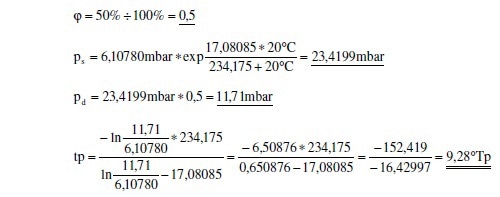If unsaturated air is cooled, at first the humidity content and the partial pressure of the water remain constant. However, the relative humidity increases since saturated water vapour pressure coming from above more and more approximates the partial water vapour pressure.
Humidity Sensors and Modules - Innovative Sensor Technology IST AG
This is the reason why cold air is able to absorb less humidity than warm air. When the saturation limit is reached at 100 % RH, i.e. when the saturated water vapour pressure equals the partial water vapour pressure, this is called the dew point temperature. Thus colloquially, the imaginary temperature where condensation has just not yet occurred, is called the dew point.
The following applies to the dew point:
- The moisture content at dew point is unchanged
- No water has yet condensed.
- The partial water vapour pressure has not changed
- It equals the saturated water vapour pressure
- The relative atmospheric humidity at dew point is 100 %
- The air has reached maximum water vapour saturation.
Calculation of Dew Point - Formula

Table of Magnus coefficients
| Phase |
t
°C |
C1
mbar |
C2
- |
C3
°C |
| Ice |
-50.9 to 0.0 |
6.10714 |
22.44294 |
272.440 |
| Water |
-50.9 to 0.0 |
6.10780 |
17.84362 |
245.425 |
| Water |
0.0 to 100 |
6.10780 |
17.08085 |
234.175 |
Example Calculation of Dew Point
| Readings from measuring instruments: |
temperature = 20.0 °C |
| |
Relative Humidity = 50% |


This information has been sourced, reviewed and adapted from materials provided by Innovative Sensor Technology.
For more information on this source, please visit Innovative Sensor Technology.